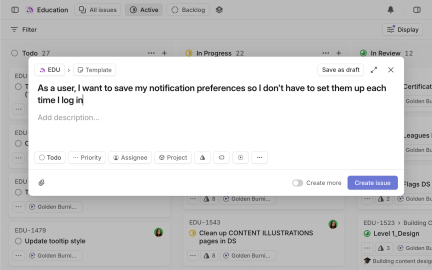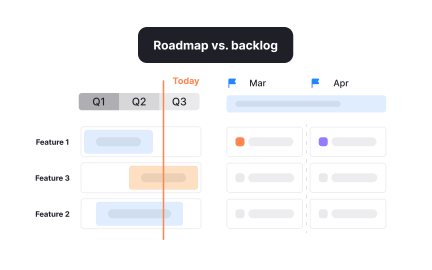Agile Product Owner
An agile product owner defines and prioritizes the product backlog, making sure development work aligns with user needs and team capacity.
What is Agile Product Owner?
Your agile team delivers features nobody wants because the connection between development team and actual users is broken, leading to technically excellent solutions that miss the mark on business value and user satisfaction despite perfectly executed sprints.
Most organizations assign product ownership to whoever's available without understanding the critical role, missing that effective Product Owners must bridge business strategy and development execution while maintaining deep user empathy and stakeholder management skills.
An Agile Product Owner is the single empowered person responsible for maximizing product value by managing the product backlog, providing clear requirements, making priority decisions, and ensuring the development team understands the 'why' behind every feature.
Teams with effective Product Owners deliver 65% more business value, achieve 50% better user satisfaction, and complete sprints with significantly fewer clarifications because someone owns the vision and answers rather than committee confusion.
Think about how successful products at companies like Amazon have clear single-threaded owners, or how Spotify's Product Owners balance tribe autonomy with company strategy to create coherent user experiences.
Why Agile Product Owners Matter for Value Delivery
Your scrum team's velocity looks great but business results disappoint because without empowered Product Owners, teams efficiently build wrong things, optimizing for output metrics rather than outcome achievement that actually moves business forward.
The cost of weak product ownership compounds through every sprint building low-value features. You waste development capacity, frustrate users with unwanted features, accumulate technical debt, and lose market position while competitors with strong product ownership deliver what users actually need.
What effective Agile Product Owners deliver:
Better business value from development efforts because Product Owners ensure every sprint delivers meaningful progress toward strategic goals rather than just completed user stories.
When Product Owners excel, development work directly connects to business outcomes rather than velocity theater that impresses with numbers while disappointing with results.
Enhanced team clarity and motivation through clear vision and requirements that help developers understand impact rather than just implementing specifications without context.
Improved stakeholder satisfaction and trust because Product Owners manage expectations and communicate progress rather than surprising stakeholders with unwanted deliveries.
Faster decision-making and reduced blocks as empowered Product Owners make choices quickly rather than committee paralysis that stops team progress.
Stronger user focus and market fit through Product Owners who deeply understand users rather than proxying stakeholder opinions without real user insight.
Step 1: Develop Deep User and Market Understanding (Month 1)
Invest time in user research and market analysis rather than relying on secondhand requirements, building empathy that guides every backlog decision.
This creates Product Owner foundation based on actual user needs rather than stakeholder assumptions about what users probably want.
Step 2: Master Backlog Management and Prioritization (Month 1-2)
Learn to maintain clean, prioritized backlogs with clear user stories rather than wish lists, ensuring teams always know what's next and why it matters.
Focus backlog work on value delivery rather than comprehensive documentation, balancing clarity with agility to enable fast development.
Step 3: Build Stakeholder Management Skills (Month 2-3)
Develop ability to manage diverse stakeholder expectations while maintaining product vision rather than becoming feature request aggregator without strategic filter.
Balance stakeholder satisfaction with user value to ensure political needs don't override user needs in backlog priorities.
Step 4: Create Strong Development Team Partnership (Month 3-4)
Establish collaborative relationship with development team rather than customer-supplier dynamic, becoming part of team while maintaining business perspective.
Step 5: Measure and Communicate Value Delivery (Month 4+)
Track business outcomes from released features rather than just velocity, demonstrating Product Owner impact through value metrics not activity measures.
This ensures Product Owner role drives business results rather than just keeping developers busy without strategic impact.
If Product Owner role doesn't improve outcomes, examine whether you have real empowerment rather than responsibility without authority.
Recommended resources
Courses

Accessibility Foundations

Wireframing

HTML Foundations
Lessons

From Static to Dynamic

Planning Roadmaps and Backlogs






